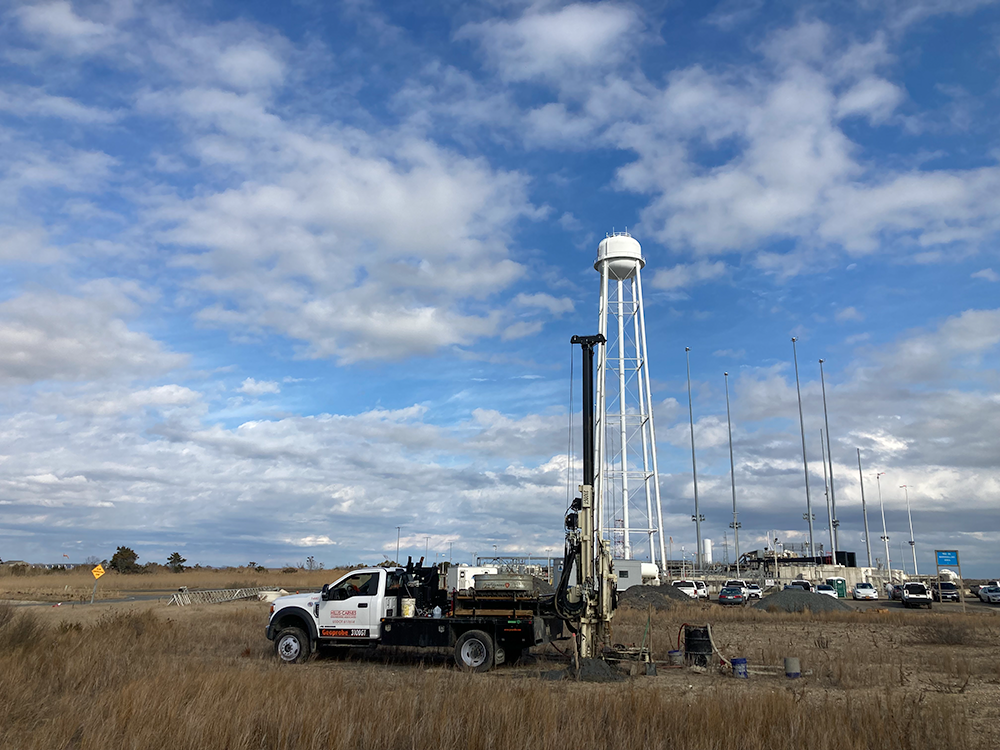Hillis-Carnes Provides Extensive Work for MARS Launch Pad 0D at NASA Wallops Flight Facility

MARS Launch Pad 0D at NASA Wallops Flight Facility
Hillis-Carnes just finished working with Virginia Commercial Space Flight Authority (VCSFA) to provide Geotechnical Engineering and subsurface exploration services for the new launch complex, Pad 0D at NASA Wallops Flight Facility on Wallops Island, Virginia. The proposed structures include a launch pad, a gantry storage area, a test stand location, a 200,000-gallon water tower, multiple storage tanks and tank farms, multiple basins for deluge water and dump ponds, and various equipment pads. The project concept includes heavily loaded structures on deep foundations and lightly loaded structures on shallow foundations.
Hillis-Carnes’ skilled and experienced crew, worked under the supervision of Branch Manager, Vernon Opdyke, Project Manager, Alycen Kus, Drilling Manager, William Holden, and Project Engineer, Jeremy Boehm, P.E. performed an extensive scope of work for this remarkable development. James Klaverweiden, John Martin, Johnathan Salensky and Christian Vega were the Drillers on the project; Delany Midash was the Geotechnical Aid on the project.
Our scope of work included Geotechnical Engineering services prior to construction, which involved exploring the site of work, the performance of laboratory tests, engineering analyses, and preparation of a geotechnical report. In order to accomplish these objectives Hillis-Carnes performed a subsurface exploration that included two Standard Penetration Test (SPT) soil borings to depths of 200 feet, three SPT Borings to depths of 150 feet, seven Cone Penetration Test (CPT) soundings to depths of 120 feet, one Dilatometer Test (DMT) sounding to a depth of 100 feet, and five Stormwater Borings to depths of 10 feet. After completion of all field exploration and laboratory testing, a geotechnical engineering report was prepared and submitted. The report included the logs of all test holes and a summary of the laboratory testing program results. Also included were our engineering analyses and recommendations for the geotechnical design and construction of the project. The project was completed February 2023.
